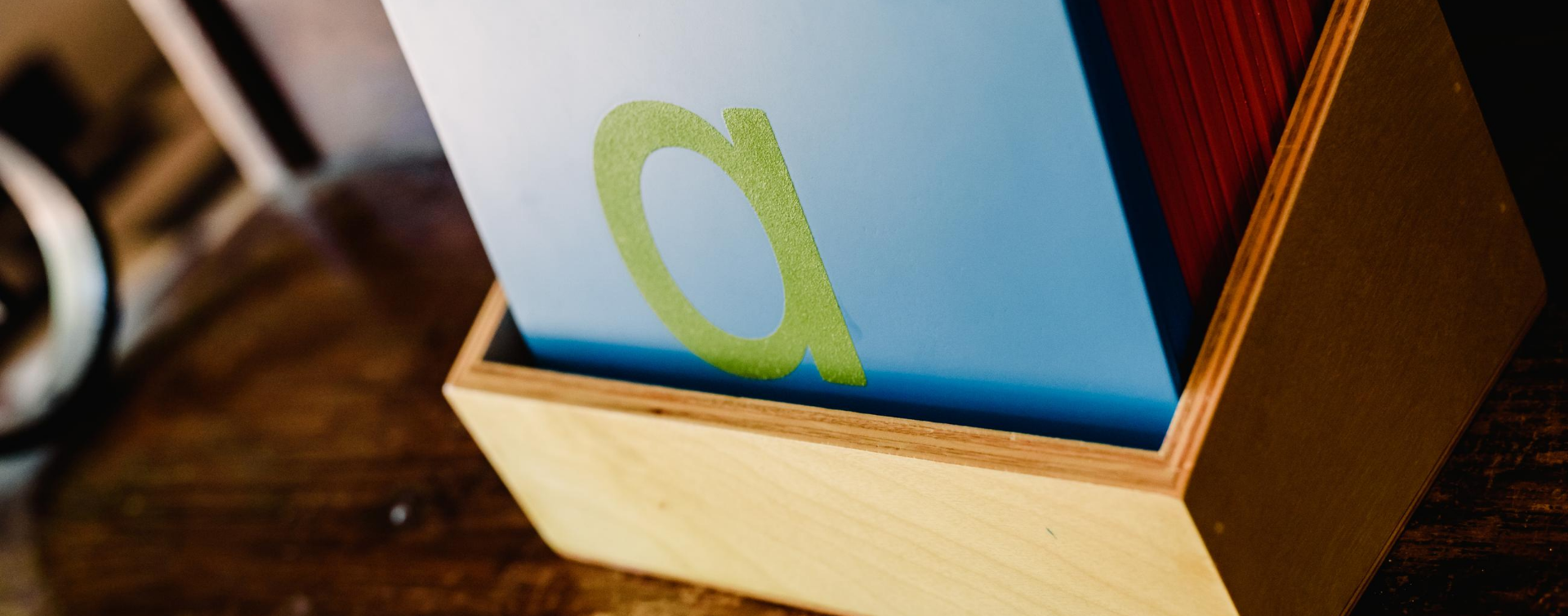Many children show great joy in learning the sounds of the letters of the alphabet and eagerly choose this work, day in and day out until they have learned enough letters to start forming words. This happens when the child has been correctly prepared. Montessori was a genius in being able to recognise the nuance of each material and how the child’s journey through the classroom should be navigated with careful steps and increments. No lesson is given without ensuring that the child has been adequately readied. Let us look at the activities that help ready the child for the Sandpaper Letters.
Indirect Preparation
The importance of understanding indirect preparation is vital. Montessori was very clear in her writing that teachers should be able to recognise when a child was ready for a new presentation. In the case of the Sandpaper Letters, there are various considerations.
This material offers the child a three-fold impression of the letter by stimulating three senses. These are:
- visual discrimination (what the letter looks like),
- muscular impression (what the letter feels like), and
- auditory discrimination (what the letter sounds like).
To prepare the eye to notice the differences in the letters, the child works in the Sensorial area with the materials of visual discrimination. These are the Knobbed and Knobless (Coloured) Cylinders, Pink Tower, Broad Stair and Red Rods. The child is taken a step further, refining her/his visual sense with the Geometric Solids and the flat shapes in the Geometric Cabinet.
Letters are, after all, simply an arrangement of straight and curved lines, and this work with the geometric shapes prepares the eye to notice these differences. At the same time, the child’s hand and fingers are being prepared to feel the shapes by tracing them. The child’s hand experiences straight and curved lines over and over as s/he moves through the solids and Geometric Cabinet drawers.
Lastly, the ear is given indirect preparation by matching the sounds in the Sound Cylinders and Montessori Bells. The fine difference in sound and tone train the ear to notice subtle differences. Think in English how similar the sounds ‘f’ and ‘v’ are!
The Three Period Lesson
Montessori borrowed fellow physician and educationalist Edouard Seguin’s three-period lesson to introduce new terminology/vocabulary to children. The Sandpaper Letters are taught in this way. There is however a real danger of the lessons becoming rote and uninteresting if we call the child every day to ‘learn their letters’, and then sit down to the same narrative over and over. There is nothing wrong with offering the three-period lesson in itself, but look for signs in the child of boredom/disinterest and consider ways in which you can make the lesson a little different. There is no hurry to learn the letters within a given time-frame, but once the child shows interest, it is our work to ensure that s/he does not lose that interest.
Follow-on work from the Sandpaper Letters
Using a sand tray to practice the writing letters is a common way of extending the Sandpaper Letter lesson. Ensure that you are initially present to gently guide the correct formation of the letter. A blackboard with chalk is also a fun way of experiencing the writing of letters. The resistance of the chalk on the board is more beneficial than a whiteboard and marker as it provides the hand and wrist with a bit of resistance. These muscles are thus exercised and strengthened.
We hope that you will consider this spotlight in your work with your children and would love to hear your experiences (trials and tribulations!) in using the Sandpaper Letters.



